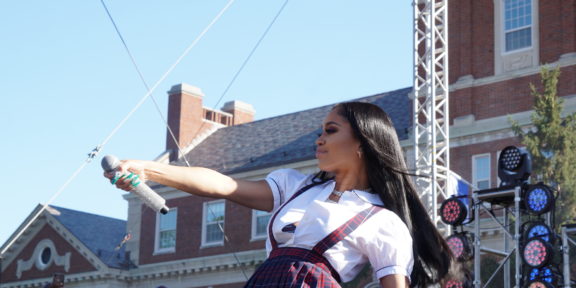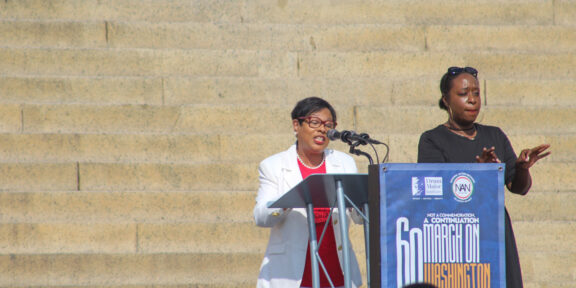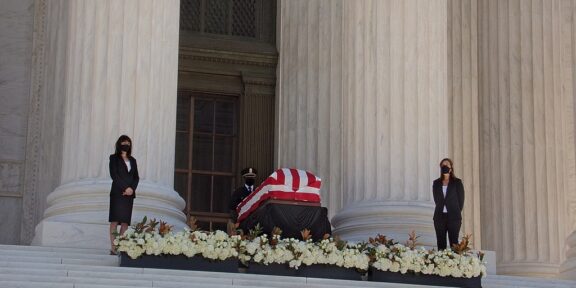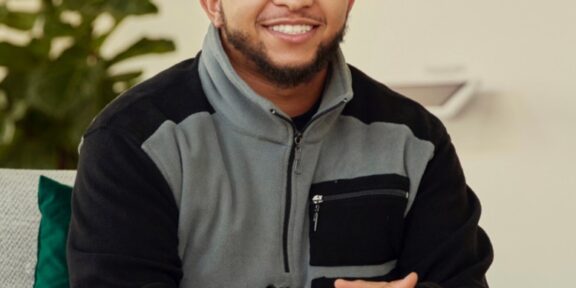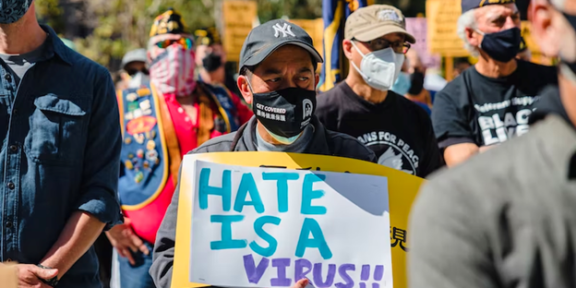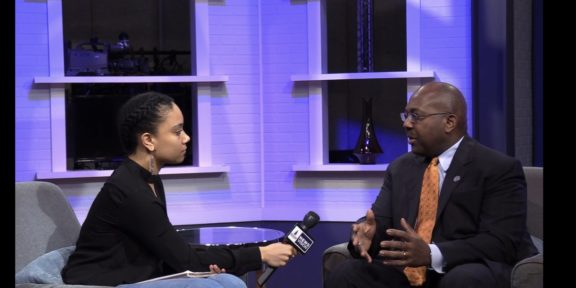By Essence Wiley
Howard University News Service
A ski mask has been deemed the ultimate winter accessory and a staple in Beyoncé’s winter look on one end of the cultural zeitgeist, but a growing number of political and police officials see it as a polarizing symbol of crime.
Philadelphia City Council passed a bill that became law this month, banning ski masks pretty much everywhere – parks, schools, city-owned buildings and public transportation. Potential offenders will face up to a $2,000 fine if a crime is committed while wearing a mask. With crime reaching all-time highs in the District of Columbia and officials desperate for a remedy, Washingtonians are speculating whether D.C. is next.
District Mayor Muriel Bowser proposed a mask ban last month in the Addressing Crime Trends (ACT) Now Amendment Act of 2023, which drew many people expressing their opinions at a D.C. Council hearing that lasted well into the evening.
Both cities are part of a movement to ban masks around the country. At least 10 jurisdictions in states such as North Dakota, Virginia and Ohio have implemented bans. Cities like Atlanta have also introduced such proposals.
‘The Catwalk Survival Solution’
Ski masks or balaclavas first rose to fashion fame when Memphis rapper Pooh Shiesty, who is known for his southern gangster rap, began wearing head coverings during the COVID-19 pandemic. The “Back In Blood” rapper posted up in the accessory regularly helping popularize the trend around the nation and eventually earned the masks a new name, “Shiesty,” in his honor.
Though the two terms are often used interchangeably, ski masks leave most of the face a mystery with only three holes for the eyes and mouth, while balaclavas leave more of the face exposed.
While the masks have become more negative among politicians, high fashion can’t get enough of them. “With its apocalyptic, bleak connotations and protective, concealing qualities, the balaclava is the catwalk survival solution to moving forward into an uncertain future,” Ella Alexander wrote in Harper Bazaar.
The headgear is a staple on the runway and in street style. Some of the culture’s most popular fashion houses including Balenciaga, Calvin Klein and Gucci have all sent renditions of the style down the runway in the last few years.
Lyst, a global shopping company, reported that web searches for the headgear jumped 344% between 2021 and 2022. The platform later selected the balaclava as one of the hottest products during the final quarter of 2021 based on search data collected from Google, Instagram and Depop, a resale platform.
But at their core, ski masks offer practicality. GQ attributes the balaclava’s utilitarian roots to Ukraine as British troops wore them to keep their heads warm during the Crimean War battle in 1854.
Skis Masks in the DMV
Balaclavas, which are also known as ski masks, have been a winter staple for Washingtonians long before they were associated as a catalyst for crime or a fashion statement.
“Ski masks have been a thing in the DMV,” said Khai Pinkston, a 23-year-old D.C. native, who remembers seeing Washingtonians wearing them most of her life.
“They would wear them to school especially during the winter time because it kept your face warm,” Pinkston recalled, “and then they would kinda roll it up on their heads and wear it as a headband so it could easily go back and forth.”
Many northerners have put their own spin on ski gear as winters can be notoriously harsh in the Northeast and Midwest. In New York City, it’s Moncler or Mackage puffer coats. In cities across the northeast and midwest, it’s masks.
“I see ski masks as a way to keep yourself warm, especially with rap culture and what we see from celebrities that a lot of these young kids look up to,” says Lyric Jernigan, a North Philly native. “They utilize ski masks as an item to add to your overall outfit.”
Popular culture icons and stylish celebrities like Future, A$AP Rocky, Rihanna Gunna, Ye (also known as Kanye West) and Beyoncé have all sported the headgear.
In some cities, ski masks are considered a classic rather than a trend.
“It’s part of our culture and it’s something the boys just wear like middle schoolers, high schoolers, young adults – like they always just had ski masks on their heads, especially in the winter time,” Pinkston says, recalling winters in Washington. “I remember Helly Hansens used to be a thing, and Helly Hansens were like known for having the jackets for skiing and like harsh winter. So, we were always wearing Hellys and a ski mask and the big Nike boots.”
Crime in the District and Policing Fashion
An easy way to hide any identifiable features, a number of crime suspects have been wearing ski masks while stealing cars, robbing businesses and even during shootings.
Public safety, the reason Philadelphia council members passed the mask ban 13-2, is also a top priority for district officials. The city’s murder rate is the highest it has been in nearly two decades, carjacking is up by 100% this year and violent crime increased by 40% from 2022.
Crime data is especially alarming for juveniles. In fact, juvenile crime seems to be all Washingtonians are talking about.
I hate living in D.C. shit feel like if u wear nice clothes or got a nice car u gotta be ready to shoot a 12 year old everyday
— nostra (@lacosablo) December 4, 2023
All jokes aside, DC kids (late 70s-90s babies) been treated like criminals our entire lives and the city was no safer.
That’s why many of us are so against stricter penalties + more police. We lived it and all it did was traumatize us.
— AB (@Abeale202) November 30, 2023
Send them kids to jail and make DC great again.
— Glamorizing Tech👩🏾💻💓 (@princessxap) November 28, 2023
The entire DMV getting bullied by 12 year olds with guns. Shit crazy.
— Tahj’s Father (@Deshola_a) November 28, 2023
Mayor Bowser declared the issue a public emergency last month. In her Mayor’s Order, a press release, Bowser cites 458 arrests of juveniles for robbery, including carjacking, homicide or assault with a dangerous weapon in the first nine months of the year, 10% more than the total number of such arrests in all of 2022; 151 juvenile arrests for carjackings, representing one-third of all carjacking arrests in the district; and 97 juveniles suffering from gunshot wounds, including 15 homicides between January and October.
“This violence is having a devastating impact on victims, their families, communities, and the District as a whole,” Bowser said in a statement.
Surveillance footage from various crime incidents around the city shows that suspects rely on trusty ski masks to commit crimes. Washingtonians have used X, formerly Twitter, to weigh in.
Tbh i dnt want anyone w a ski mask on around me
— ēdē (@FineAssIdi) December 4, 2023
🚨@councilofdc, #BanSkiMasks #EnoughIsEnough #SickandTired #DistrictofChaos #DistrictofCrime #DeathCity
Most of our alerts highlight criminals wearing ski masks. URGENTLY PASS the ACT Now bill. #DC is DANGEROUS.
Great job, Philly 👏🏽 https://t.co/Edk3ojI5RH pic.twitter.com/b6sZAFjuGM
— April (@aprilhb) December 2, 2023
It is weird and depressing to see politics in DC being reduced to crime crime crime trolls on this platform. It is bad enough that 90s fashion is trying to make an ill fated comeback. Do we also have to take on racist policing policies too?
— Laura Fuchs (@DCWard7teacher) November 22, 2023
News – Philly passes bill, 13-2, to ban ski masks in some public areas to battle crime. Democratic Mayor Kenney says he’d review and “looks forward to our on- going work with City Council on the urgent matter of ensuring public safety.” Lets hear THAT from our DC leaders. @wcp
— Tom Sherwood (@tomsherwood) December 3, 2023
Mayor Bowser’s strategy for lowering crime is outlined in the ACT Now Amendment Act of 2023, which, among other things, would implement anti-loitering, drug-free zones, increased policing and prohibition of masks “for the purpose of committing criminal acts, intimidating and threatening other people or causing fear.”
While making the city safer is ideal for many people, decisions like ACT NOW and Philly’s mask ban don’t sit right with some community members. Many Washingtonians testified for hours late into the evening at a recent hearing held by the D.C. council’s Committee on the Judiciary & Public Safety.
“If you’re not ‘Officer Friendly’ and you don’t know that potential drug seller or the person causing the ruckus, how can you pinpoint who is actually the problem?” asks Ashley Renee Ruff an Advisory Neighborhood Commissioner in Ward 7. “How do we know that we’re picking on the right person at the right time that they have committed a crime?”
With potential racial implications heavily intertwined into the police’s approach to enforcing the potential law, Taj Jackson, a fashion professor at Howard University, opposes mask bans.
“Policing what someone wears is not OK and history definitely repeats itself,” Jackson said. “It was to target young black and brown folk – make us criminals or harmful for being free. I don’t think it’s lawful, nor do I think it’s right.”
The mask restriction is a contentious addition to the mayor’s bill with so many dissenting opinions on the issue. “You cannot simply use that as some type of probable cause to make some kind of stop that is more than a legal detention,” Prince George’s County Police Chief Malik Aziz told Fox5 in May.
Jernigan, a Southeast D.C. resident, is torn between the two sides of the argument. She said she could understand “a business’s opposing view to a group of young men walking into your establishment with ski masks on. You don’t know if they’re there to help or harm.”
Pinkston is worried the ban is a slippery slope.
“I just feel like it is another way to police Black people, especially Black youth,” she said. “What it symbolizes now, robbing people or whatever, that’s not Black people’s fault, especially not Black kids.”
Robert Vinson Brannum of the Ward 5 Leadership Council’s public safety committee believes ACT NOW would actually protect Black people as victims of crimes.
“While there has been severe concern about mass incarceration of Black Washingtonians, there must be a concern for the many Black Washingtonians as victims of crimes,” he argued at the hearing.
“Yes, anti-crime laws must be balanced,” Brannum said. “The constitutional protections and services should address crime avoidance, but advocates for police reform must recognize the plight that crime has on communities of color.”
How and when the D.C. Council will decide on the matter is unknown. As winter approaches, Washingtonians will likely remain masked up.
Essence Wiley covers fashion for HUNewsService.com and is founding editor of Cover 2 Cover magazine.


